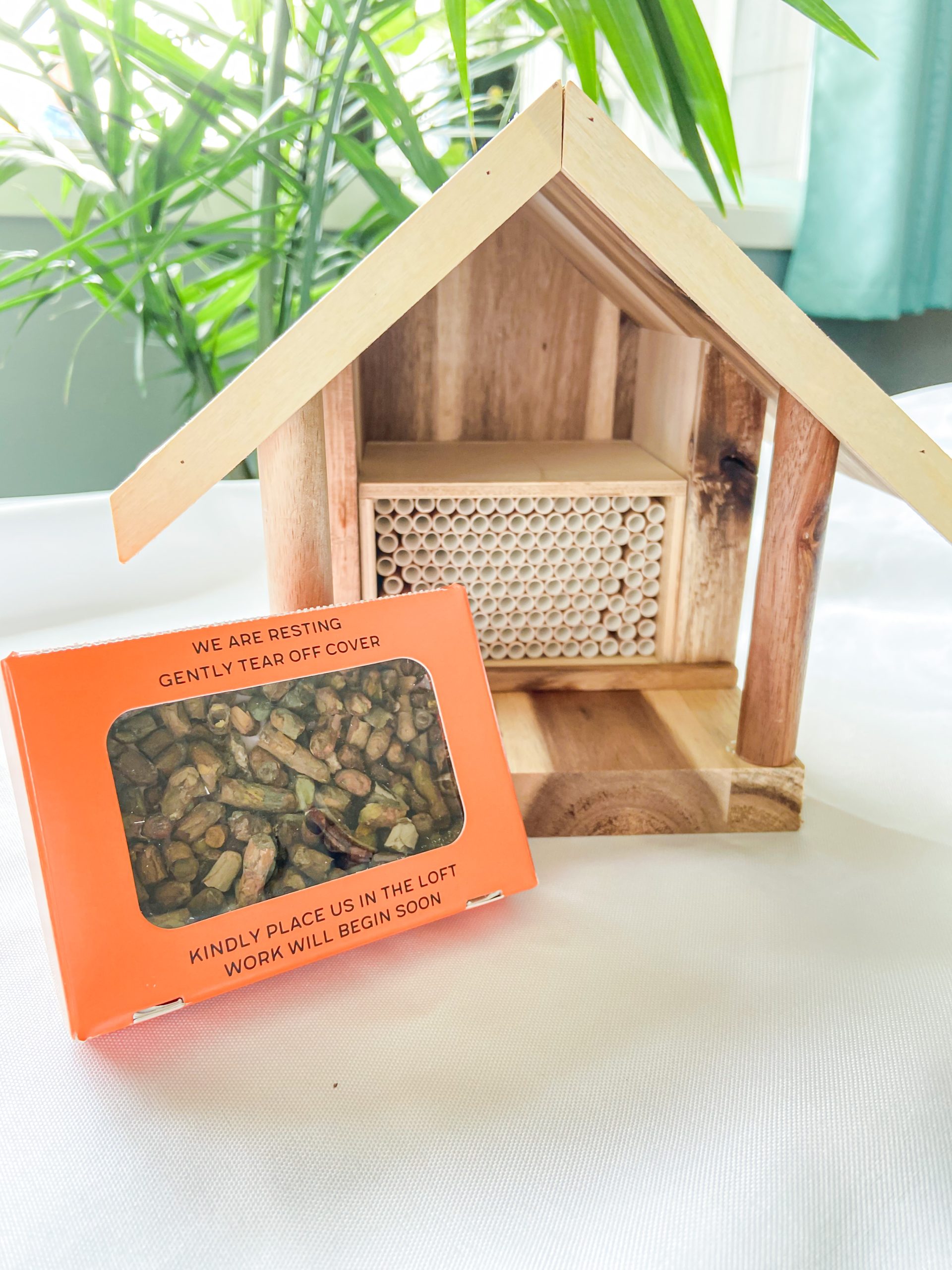If you want to attract more pollinators to your garden next year, you can release over a hundred leafcutter bees onto your property from Kind Bee Farms! Installing a bee house will give leafcutter bees an easier time locating your plants and flowers so they can get to work spreading pollen. Before you know it, you will see bright blooms and vibrant growth all around you!
Below, we will discuss a few reasons why a bee house is the perfect home for leafcutter bees and what you should consider when selecting the right model. Keep reading to learn where you can find a quality bee house from Kind Bee Farms.
What Are the Benefits of Installing a Bee House?
Installing a bee house on your property can help busy mother bees find a suitable spot to lay and nest their cocoons!
In nature, female leafcutter bees create nests in hollow plant stems or holes formed by wood-boring insects. The female bee inspects several different cavities to find a safe place to lay her eggs and chooses a spot based on the diameter and tunnel depth.
Once leafcutter bees find a spot to house their babies, they begin laying eggs and creating cocoons from the leaves they cut from nearby plants (which is why they are called leafcutter bees).
Rather than hunting around your property for a suitable cavity, a bee house gives your leafcutters easy access to a manufactured nesting tube.
A sturdy, well-made bee house provides leafcutters and their cocoons extra protection from the weather and keeps them safe from pesky varmints. Properly storing the bee house during the off-season will also give the cocoons a better chance of survival than being left outside to the elements.
What to Look for in a Quality Bee House
There are many different bee houses on the market, and it can be hard to know how to select the right one. To help your leafcutters safely nest and lay cocoons for the following growth season, look for the following features:
- Safe nesting tubes: Select nesting tubes made from materials that are safe for your bees to fly in and out of the bee house. Due to their smooth surface, paper straws are the safest material for leafcutter bee nests.
Materials like plastic, bamboo, and drilled wood blocks are common on the market, but they are bad for trapping moisture, mould, and pathogens. Stray bamboo or wood splinters can also cut and hurt the bees’ bodies and wings when they try to fly out.
- Sturdy house materials: You need to select a house structure that can withstand harsh weather conditions like wind, rain, and summer hail. Avoid materials susceptible to cracks, water damage, and mould growth, which can compromise the house’s integrity and potentially harm the bees.
The bee house from our Pollinator Kit is made from sturdy, weather-resistant acacia wood, which has space for aeration to prevent the build-up of moisture, mould, and disease.
- Accessible for the bees: It’s important for your bees to easily fly in and out of the bee house without any issues. If it’s too difficult for the bees to enter or even find the house, they will fly away and find their own nesting spot.
Important Note: The best way to guarantee that leafcutter bees make a home in your house is to order your own bees. Many bee houses are sold on the market without bees included, with the idea that if you mount a bee house, leafcutters will naturally swarm to the house and nest in the tubes. However, this is rarely the case. Wild leafcutter bees are more prone to creating nests in trees, roof shingles, and plant stems.
At Kind Bee Farms, our Pollinator Kit features an orange box of readily hatched bees, an Acacia wood house, and paper nesting tubes. We ensure you have everything you need to get your kind bees working and nesting throughout the summer!
Get a Leafcutter Bee House from Kind Bee Farms
Add a bee house to your property and watch your plants flourish in the 2026 growing season! Visit our Shop to learn more about our Bee Pollinator Kit, which includes everything you need to set your bees up for success.
Subscribe to our newsletter to be among the first to pre-order your leafcutter bees, and visit our Blog for more fun facts about these superpollinators.

